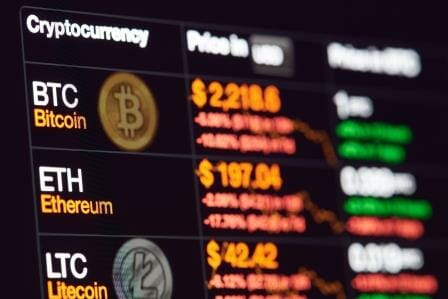In 2020, the liquidity of Bitcoin in the market steadily decreased. According to Glassnode, illiquidity was a determining factor for Bitcoin.
The future of Bitcoin in the market could be even more promising, after its price broke its all-time high, momentarily exceeding USD 28,500. The small amount of Bitcoin available in the market indicates this, according to a recent report by Glassnode.
The firm notes that only 22% of the existing bitcoins could be part of the market. At the same time, a growing number of large investors are clinging to the cryptocurrency as a store of value. They estimate that just 4.8 million BTC out of the more than 18.5 million BTC in existence are in constant motion.
The researchers consider that “a sustained increase in the number of illiquid bitcoins (not available for sale) indicates a strong sentiment of investor confusion and a potentially bullish signal.” In other words, since there is a smaller supply of coins in the market, it is more expensive to obtain them.
The bitcoins of the hodlers (or long-term investors) “are practically out of the liquid part of the coins in circulation accessible to trade. In contrast, exchanges with constant inflows and outflows contribute directly to the liquidity supply pool,” says Glassnode.
MicroStrategy’s investment attitude is an example of this behavior since the company continued to buy even though the price of Bitcoin increased. They made all Bitcoin purchases at an average price of USD 21,925, of which they already have an increase of more than 25%.
Glassnode calculated the liquidity of the entities that own Bitcoin, depending on the movements of the coins that they received in their entire existence, either from exchanges, companies, or other types of organizations. To that end, they take into account the relationship between address inputs and outputs over time, with an index between 0 and 1.
An entity is illiquid when the liquidity factor is less than 0.25. However, it is liquid if it has an index between 0.25 and 0.75, and highly liquid if it has a factor of 0.75 or more. Their calculations exclude internal movements, that is, transactions between addresses that the same entity controls, as they do not contribute to market liquidity.
Bullish Future on Bitcoin’s Market Horizon
The researchers identified that the amount of bitcoins in motion has been declining in recent months. There are a growing number of entities that do not want to sell their bitcoins. “This indicates that the staggering amount of illiquidity is driving the current bullish market,” according to the report.
The current behavior of holding BTC has been a trend of bullish markets, Glassnode notes. They identified it that way in 2017, when the biggest bullish run to date occurred, taking the price to the already exceeded all-time high of USD 20,000 per Bitcoin.
According to Glassnode, “we are currently in a stage where the illiquid supply is growing more than the total circulating supply. This is a pattern similar to the one that we observed during the bullish run of 2017”.
“Illiquid supply tends to decrease during bearish markets and increases during bullish markets (and vice versa for liquid supply),” the report adds. The research concludes that the lack of bitcoins in motion makes the future of the price of the cryptocurrency look even more bullish.
Given that the trend has been increasing in the last year, the scenario “looks potentially bullish for Bitcoin in the coming months, as there are fewer bitcoins available on the network to buy,” the report adds.
At the time of writing this article, the price of Bitcoin is around USD 28,000. Following the break of USD 20,000 in recent weeks, bullish sentiment is at the new psychological mark of USD30, 000.
By Alexander Salazar











